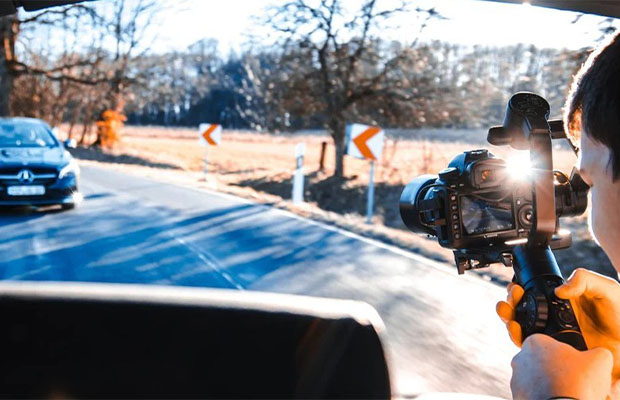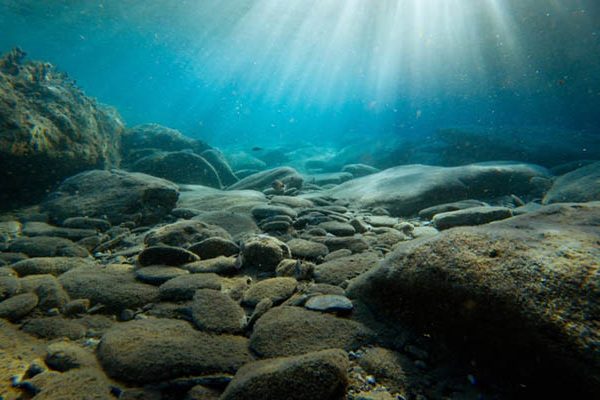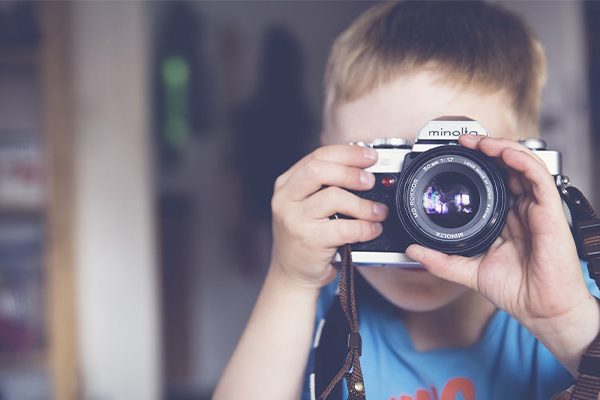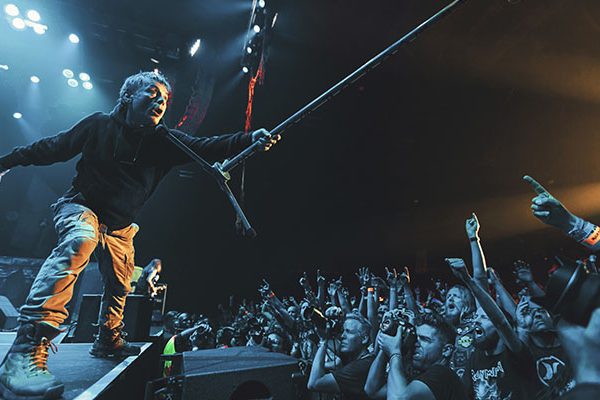Both professionals and amateurs engage in the multifaceted hobby of car photography. Furthermore, it is a ton of fun and excitement. You can put your photography skills to the test by capturing fast-moving automobiles, or you can express your creativity by capturing still-life images of automobiles and their components.
The best camera for car photography should have large, high-resolution image sensors and interchangeable lenses.
This article lists the top 14 cameras for taking pictures of cars. It’s a lot of fun to photograph cars, especially if you enjoy both cars and photography.
You May Also Like: Best Camera For Concert Photography
Table of Contents
- Our Top Pick
- Best Camera For Car Photography Review
- 1. Canon EOS R5: Our Pick
- 2. Canon EOS R6: Also Great
- 3. Fujifilm GFX 100S: Best For Professional Work
- 4. Nikon Z7 II: Best For Versatile Car Photography
- 5. Sony a7R IV: Best For Every Type Of Car Photography
- 6. Sony A7 III: Best For General Car Photography
- 7. Sony a1: Best For Professional Vehicle Tracking
- 8. Nikon Z6 II: Best For Car Tracking
- 9. Fujifilm X-T4: Best For Artistic Car Photography
- 10. Canon EOS M50 Mark II: Best For On-the-go Car Photos
- 11. Olympus OM-D E-M1 Mark III: Best For Continuous Shooting
- 12. Panasonic Lumix G100: Best For Travel Car Photography
- 13. Nikon D3500: Best Cheap Camera For Car Photography
- 14. Nikon D850: Best Camera For Sports Photography And Video
- Buying Guide For Best Camera For Car Photography
- Our Verdict
Our Top Pick
- 1. Canon EOS R5: Our Pick
- 2. Canon EOS R6: Also Great
- 3. Fujifilm GFX 100S: Best for professional work
- 4. Nikon Z7 II: Best for versatile car photography
- 5. Sony a7R IV: Best for every type of car photography
- 6. Sony a7 III: Best for general car photography
- 7. Sony a1: Best for professional vehicle tracking
- 8. Nikon Z6 II: Best for car tracking
- 9. Fujifilm X-T4: Best for artistic car photography
- 10. Canon EOS M50 Mark II: Best for on-the-go car photos
- 11. Olympus OM-D E-M1 Mark III: Best for continuous shooting
- 12. Panasonic Lumix G100: Best for travel car photography
- 13. Nikon D3500: Best cheap camera for car photography
- 14. Nikon D850: Best camera for sports photography and video
Best Camera For Car Photography Review
1. Canon EOS R5: Our Pick
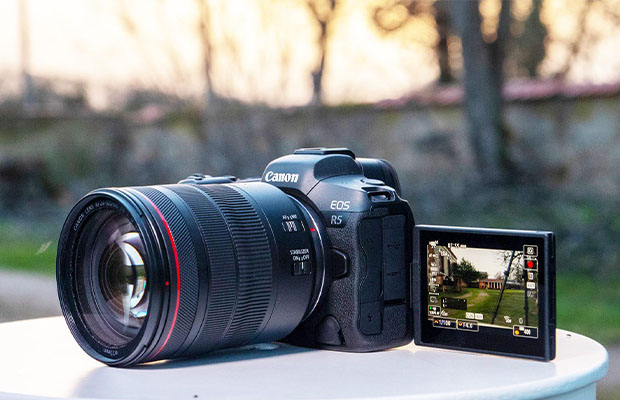
The Canon EOS R5 has a fantastic AF system and a high-speed continuous shooting mode for capturing moving objects.
Pros
- 45 MP sensor
- 20 FPS continuous shooting
- Gorgeous image quality
- Fast AF system
Cons
- Expensive
Let’s begin with the Canon EOS R5, one of the company’s top mirrorless cameras. No matter your interests or preferences, this ground-breaking camera has some amazing features that make it one of the best cameras for car photography.
A 45 MP sensor and the most recent DIGIC X processor are features of the EOS R5. This implies that you can photograph cars in high resolution and still have a very high keeper rate.
The Canon EOS R5’s incredible AF system, which offers 100% area coverage with 1,053 AF zones, will come in handy if you want to capture moving vehicles. The R5 also has a great continuous shooting feature that can shoot at 12 frames per second with a mechanical shutter or 20 frames per second with an electronic shutter.
The R5 can be used with native Canon RF lenses or with many of Canon’s top-notch EF lenses (via an adapter).
2. Canon EOS R6: Also Great
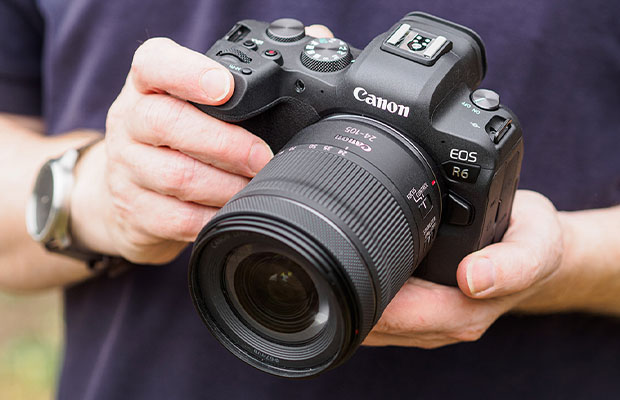
With most of the same features as the R5, the Canon EOS R6 is a less expensive option.
Pros
- Incredible AF system with 1,053 points
- Advanced car-tracking AF feature
- Dual card slots
Cons
- Only has a 20 MP image sensor
The Canon EOS R6 is a good substitute if you don’t want to spend the money on the Canon EOS R5, as it still provides outstanding quality and speed for car photography. This full-frame mirrorless camera has a great AF system, a respectable image sensor, and a ton of other great features.
It does have fewer megapixels than the R5, but the ISO range is the same (expandable up to 204,000). The same electronic shutter and continuous shooting rates of up to 20 FPS are also present, along with the DIGIC X processor.
The Canon EOS R6 has two card slots in addition to an amazing AF system with 100% coverage, just like the Canon EOS R5.
The car-tracking AF is a fantastic addition to this camera. This is ideal for this kind of photography because it was created specifically to track moving vehicles. The Canon EOS R6 shares the same RF and EF lens lineups as the Canon EOS R5.
3. Fujifilm GFX 100S: Best For Professional Work
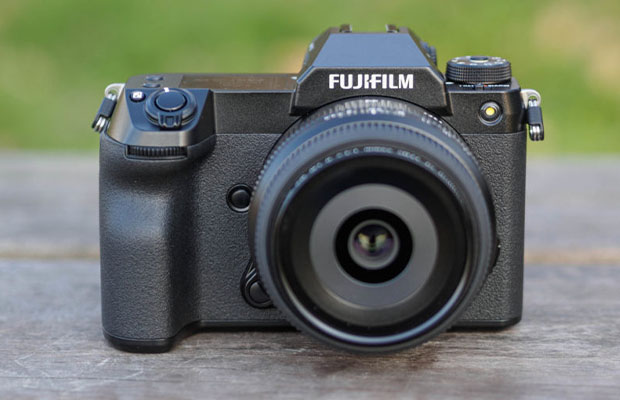
One of the best available image sensors is provided by the Fujifilm GFX 100S.
Pros
- 102 MP sensor
- In-body image stabilization
- Compact and lightweight design
Cons
- Incredibly expensive
The Fujifilm GFX 100S is the next camera on the list. For those with a large budget, this medium-format camera is ideal because it is designed for professional use.
The GFX 100S has one of the best image sensors on the market, a 102 MP back-illuminated CMOS sensor that produces stunning images with amazing detail, contrast, and colors.
Additionally, the 100S has a good autofocus system and in-body image stabilization. As a result, both stationary and moving vehicles can be captured in fine detail.
The camera is still relatively small and light in spite of all of this. The only drawback is the cost, which is close to $6,000. The Fujifilm GFX 100S, however, is a fantastic option if you’re a professional.
4. Nikon Z7 II: Best For Versatile Car Photography
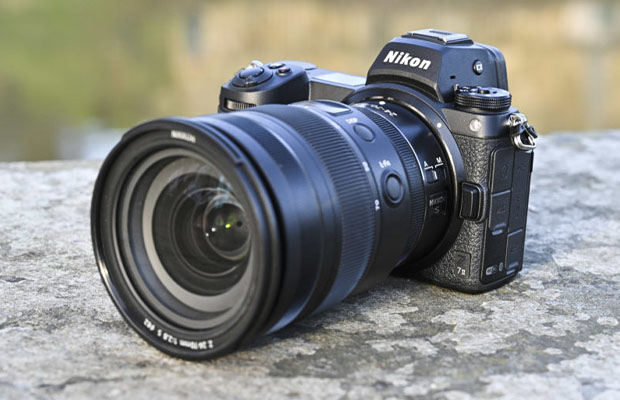
Thanks to its impressive image sensor, quick AF system, and image stabilization technology, the Nikon Z7 II excels in all aspects of car photography.
Pros
- 45.7 MP sensor
- In-body image stabilization
- Dual card slots
Cons
- Quite expensive
One of the best Nikon cameras for photographing cars is the Z7 II, which comes equipped with everything you need to capture stunning images of both stationary and moving vehicles.
It has a 45.7 MP sensor, which provides excellent image resolution and detail. RAW images should have excellent color, sharpness, and quality.
Thanks to its superior 493-point phase-detect AF system, the Z7 II’s autofocus is fantastic for taking pictures of moving vehicles. With this camera, focusing and subject tracking should be simple.
We also like that the Z7 II has two card slots: one for CFexpress/XQD and one for SDHC. As a result, you receive more overall storage space in comparison to cameras like the Canon EOS R6. A wide variety of Nikon Z lenses are compatible with the Z7 II, and with the use of an adapter, Nikon F-mount lenses are also usable.
5. Sony a7R IV: Best For Every Type Of Car Photography
With a superior 61 MP sensor and an outstanding hybrid AF system, the Sony a7R IV is a versatile mirrorless camera.
Pros
- 61 MP sensor
- The advanced hybrid autofocus system
- Access to a great range of lenses
Cons
- Relatively expensive
One of the top mirrorless cameras to ever hit the market is the Sony a7R IV. Both the autofocus system and the image sensor are excellent. With the ability to capture both moving and still car photography, it becomes a well-rounded camera.
Fantastic image resolution and sharpness are provided by the Sony a7R IV’s astounding 61 MP sensor. Your car photos will have exceptional detail, contrast, and color.
This mirrorless camera features a quick hybrid autofocus system for photographing moving vehicles. There are 425 contrast-detection AF points and 567 phase-detection AF points on it. This implies that you should be able to sharply concentrate on moving vehicles and record a lot of detail.
6. Sony A7 III: Best For General Car Photography
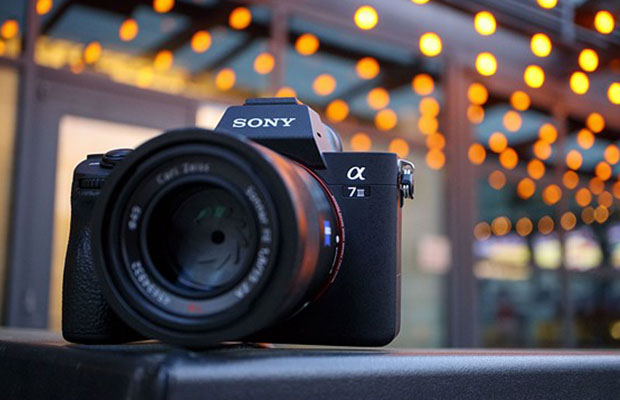
A good image sensor, quick autofocus, and a pleasant continuous shooting mode are all features of the Sony a7 III, which is one of the best sony cameras.
Pros
- Excellent AF system with 93% coverage
- Stylish and compact mirrorless design
- Compatible with Sony’s FE lenses
Cons
- Not as high resolution as the Sony a7R IV
The Sony a7 III is a fantastic option if you’re looking for a high-end camera that is a little less expensive than the a7R IV.
With a remarkable 1.8x readout speed, it has a 24.2 MP BSI full-frame sensor. This makes the camera capable of producing high-quality images in any circumstance, especially when combined with the 15-stop dynamic range and an ISO range of 50 to 204,800. In addition, the Sony a7 III makes use of the most recent BIONZ X image processor.
The a7 III has an AE/AF tracking speed of 10 FPS. With 93% coverage, the autofocus system also has 693 phase-detection AF points and 425 contrast-detection AF points.
You can take photos of automobiles in all shapes and sizes with the a7 III’s compatibility with high-end Sony FE lenses. The Canon EOS R6 or Nikon Z6 II are comparable in terms of features and quality to this camera.
7. Sony a1: Best For Professional Vehicle Tracking
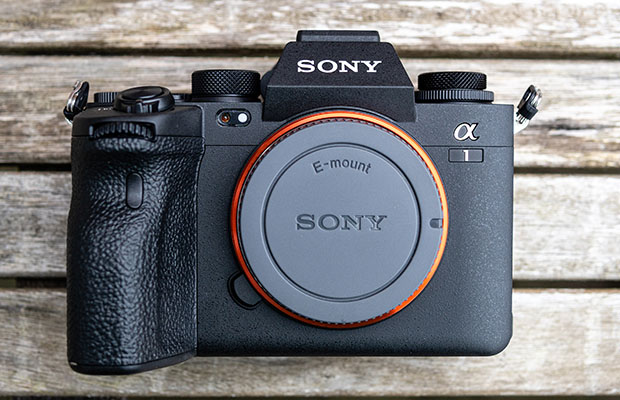
With a fantastic AF system, exceptional tracking abilities, and lightning-fast continuous shooting, the Sony a1 is an amazing high-end camera.
Pros
- 50.1 MP sensor
- Hybrid AF system that offers 92% coverage
- Up to 30 fps continuous shooting with full AF/AE
Cons
- Very expensive
The Sony a1 is the ultimate Sony full-frame mirrorless camera for car photography (in terms of both features and price), even though the Sony a7 III is a superb camera.
One of the best features is the newest BIONZ XR image processor. It’s amazingly powerful, and it combines with the 50.1 MP Exmor RS CMOS sensor to let you capture amazing images of cars on the move
A 759-point hybrid AF system with a variety of tracking features is also included with the Sony a1. Additionally, it boasts impressive 30 FPS continuous shooting speeds with full autofocus and autoexposure. The Hi, Mid, and Lo buttons on the camera’s top make it simple to switch between different continuous shooting modes.
The Sony a1 is designed from every angle to take professional-quality photos. The a1 has you covered whether you want to use the high-resolution sensor to capture fine details or the incredible continuous shooting and AF to track moving cars.
8. Nikon Z6 II: Best For Car Tracking
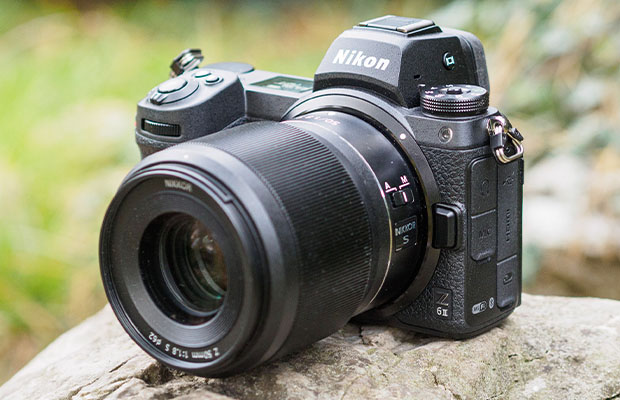
The powerful AF system and 14 FPS continuous shooting of the Nikon Z6 II make it ideal for shooting car action.
Pros
- 24.5 MP sensor for high-quality images
- Includes dual card slots for greater image storage
- The compact and stylish body design
Cons
- The LCD screen cannot be fully rotated
While Nikon has the Z7 II and the Z6 II, Canon has the R5 and R6. In comparison to the Z7 II, the Nikon Z6 II is less expensive and offers a more approachable camera for newcomers to the world of photography.
Despite having a 24.5 MP sensor, the Z6 II can still produce consistently excellent images. Although it has 273 points and a variety of tracking features, its autofocus system is not as sophisticated as the Z7 II’s. Having two card slots gives you more storage flexibility, which is another feature we like.
The continuous shooting speed of the Nikon Z6 II is 14 frames per second. This makes the camera ideal for taking pictures of moving vehicles, especially fast cars thanks to the quick autofocus system.
The Nikon Z6 II has a stunning appearance and supports a vertical grip attachment. The screen’s lack of complete rotation is its lone drawback.
9. Fujifilm X-T4: Best For Artistic Car Photography
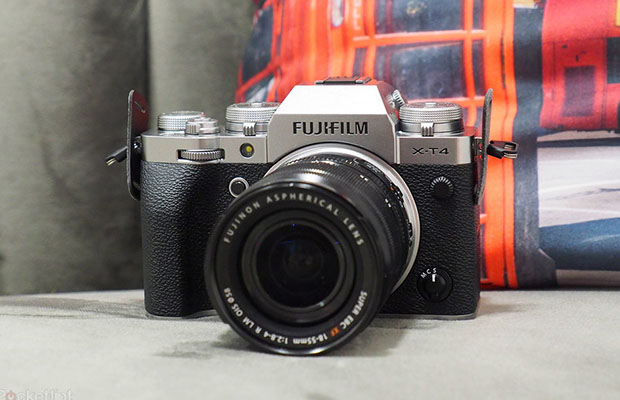
For imaginative car photography, the Fujifilm X-T4 offers great colors, some chic filters, and a variety of shooting options.
Pros
- 26.1 MP sensor
- Continuous shooting for up to 15 FPS
- Compatible with amazing Fujifilm lenses
Cons
- AF may not be as good as competitor cameras
The Fujifilm X-T4 is a fantastic midrange mirrorless camera that captures images with professional quality. It also has a stylish body with a vintage design that harkens back to the days of film cameras.
Even though the X-T4’s 26.1 MP sensor isn’t full-frame, when used with any of Fujifilm’s excellent lenses, it can easily capture high-resolution images.
In-body image stabilization is another feature we appreciate on this mirrorless camera. This offers stabilization of up to 6.5 stops, which is excellent for shooting subjects in low light. The enhanced mechanical shutter can also shoot at a lightning-fast 15 FPS, which is ideal for capturing action shots of racing cars.
The Fujifilm X-T4’s simulation modes, which enable you to produce images in a variety of styles, are also a plus if you enjoy taking artistic and vintage car photoshoots.
10. Canon EOS M50 Mark II: Best For On-the-go Car Photos
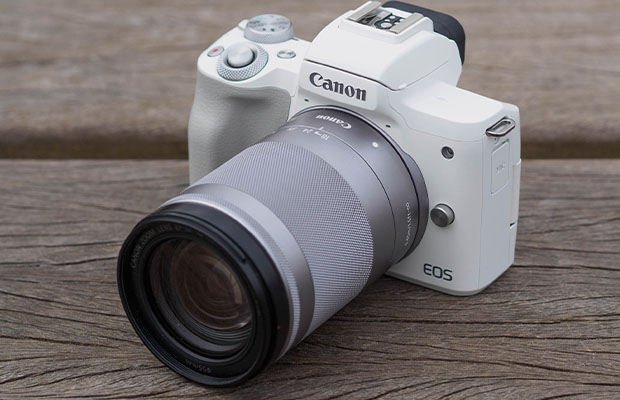
An excellent image sensor and autofocus system are features of the portable mirrorless camera Canon EOS M50 Mark II.
Pros
- Excellent AF system
- Nice 24.1 MP sensor
- Lightweight and compact
Cons
- Only uses the DIGIC 8 image processor
Cheap cameras can still be used to take pictures of cars. If you’re on a budget, check out the Canon EOS M50 Mark II, a versatile mirrorless camera with some excellent features and access to a range of quality lenses
The 24.1 MP sensor and DIGIC 8 processor are both features of the Canon EOS M50 Mark II. Even though this camera isn’t the most powerful on the market, it can still produce stunning pictures.
You should have no trouble focusing on moving vehicles thanks to its excellent autofocus system.
The Canon EOS M50 Mark II can work with EF-M and EF lenses (though you need an adapter to use the latter), so you can use the camera to take a variety of automotive pictures.
11. Olympus OM-D E-M1 Mark III: Best For Continuous Shooting
With the electronic shutter, the Olympus OM-D E-M1 Mark III can shoot continuously at 60 frames per second.
Pros
- Incredible shutter speeds
- Durable dustproof and a splashproof body
- High-quality 20 MP image sensor
Cons
- The 60 FPS continuous shooting mode does not have full AF capabilities
The Olympus OM-D E-M1 Mark III is our final recommendation. A number of fantastic features make this Olympus premium Micro Four Thirds camera ideal for car photography. The continuous shooting mode on it is also among the fastest ones out there.
Fantastic-quality images are produced by the 20 MP sensor on the E-M1 Mark III. With 121 phase-detection points, the camera’s excellent autofocus system should be helpful when focusing on moving vehicles.
The shutter, however, is the best feature. The mechanical shutter on the E-M1 Mark III can shutter at speeds of up to 1/8000s. This, along with the camera’s 60 FPS continuous shooting mode, are fantastic for photographing moving cars.
Dual card slots and a strong, weather-resistant body are additional helpful features. Finally, you can handle a variety of car photography scenarios by utilizing the entire lineup of Panasonic Lumix and Olympus MFT lenses.
12. Panasonic Lumix G100: Best For Travel Car Photography
When traveling, the Panasonic Lumix G100 Micro Four Thirds camera is a great option for taking pictures of moving objects.
Pros
- In-body image stabilization
- Compatible with Panasonic and Olympus lenses
- High-quality LCD touchscreen
Cons
- May be better for video than photography
The Panasonic Lumix G100 is yet another fantastic low-cost option. This lightweight mirrorless camera is excellent for both still and moving images captured while driving. The 12-32mm lens and the Panasonic Lumix G100 camera are included in this package.
A 20.3 MP sensor and built-in image stabilization are features of this Micro Four Thirds camera. When you combine this with the AF system, you have a camera that can take stunning pictures of cars in a variety of settings.
The Panasonic Lumix G100 is a good option if you don’t want to carry around a bulky DSLR because it is also a small, portable camera.
Olympus and Panasonic Micro Four Thirds lenses are compatible with this camera. This makes it incredibly versatile, and you can find a good selection of lenses for wide-angle, standard, and telephoto car photography.
13. Nikon D3500: Best Cheap Camera For Car Photography
I chose the Nikon D3500, one of the entry-level DSLRs with the most affordable price and notable features. As a new user, it helped me a lot to understand the fundamentals of car photography.
Pros
- Nikon F lens Mount
- Battery life: up to 1550 shots
- Up to 5fps continuous shooting
- Full HD videos at 1080p
- Bluetooth and Wi-Fi connectivity
- Dust reduction system
Cons
- No touch support.
- Videotape is not a good fit for the discrepancy-based live view focuses.
- No mic input.
I was able to launch my career on a tight budget thanks to this feature-rich camera at a fair price.
With its simple, comfortable body and user-friendly casing, it worked well for me to capture excellent image quality.
Instant 1080p full HD video capture was simple.
To effortlessly capture beautiful car scenes with limitless potential, I used a variety of lenses, from zoom to prime.
By producing images with general qualities, this masterpiece makes learning easier for beginners. Similar to this, its 24MP camera takes crisp, clear pictures with EXPEED 4 image-processing sensors that have allowed viewers to indulge in driving off in one today.
14. Nikon D850: Best Camera For Sports Photography And Video
The backside-illuminated CMOS sensor was first used in a D-SLR by the Nikon D850. Due to the sensor’s improved ability to gather light, it was possible to produce stunning images of motorsport road racing with the finest details.
Pros
- 45.7MP FX (CMOS) image sensor
- EXPEED 5 image processor
- ISO range (64-25600)
- Optical viewfinder
- AF (Multi-CAM 20K focus)
- 153 points of face detection
- Nikon F Lens Mount
Cons
- Only discrepancy discovery is used for Live View focus.
- No erected-in flash.
- SnapBridge system needs some work
Due to the Nikon D850’s processing speed being faster than EXPEED 4 and 5, the adage “extreme resolution meets extreme speed” is appropriate.
It featured my images with intense, textural details of each sports car in motorsport road racing with continuous shooting up to 9fps and creating a 4k UHD video.
With the help of this camera, I was able to realize my desire to capture the entire scene in a single shot. I would say that this is a much better all-around DSLR to brief all of your needs in a single flow. I would prefer to think of it as one of the most consuming masterpieces for auto enthusiasts.
Buying Guide For Best Camera For Car Photography
Resolution: A high-resolution camera is a fantastic option for showcasing the intricate details of a car. You can afford to set the resolution extremely high for the best quality if your primary subject matter will be static cars.
Fast frame rates: A car with a fast frame rate will enable you to capture those fleeting moments if you want to photograph one doing what it does best, which is moving. The trade-off for this will typically (but not always) be a lower resolution.
Well-performing autofocus: Another requirement related to action sports photography is this one. When attempting techniques like panning, you must look for models with a high-performing tracking focus that can keep up.
Shutter speeds: The fastest shutter speeds will be needed to capture quick action. Look for models that offer quick shutter speeds. The fastest shutter speeds are frequently found in cameras that use an electronic shutter.
Screen: A tilting or articulating screen can be very helpful when taking pictures from unusual angles to highlight the various angles of your car. However, almost all modern cameras come with this feature. A touch-sensitive screen is also useful.
Image stabilization: A strong image stabilization system will keep your shots sharp and in focus if you’re taking handheld pictures of a moving car.
Good video specs: If so, look for models that offer respectable video specifications, such as 4K video recording, a choice of frame rates, and the capacity to produce slow-motion movies.
ISO range: You need a camera with a good ISO range and ISO performance if you want to take pictures of your car in low light, like at night.
Our Verdict
We sincerely hope you found this information helpful. As you can see, there are many different high-quality cameras available, making it challenging to decide which one is best for you.
A camera with quick autofocus and an impressive continuous shooting mode, like the Canon EOS R5 or the Sony a1, is what you want if you want to take pictures of moving cars.
Instead, grab a camera with a high-megapixel sensor, like the Fujifilm GFX 100S, if you want to take pictures of parked cars.
Last but not least, a low-cost option like the Canon EOS M50 Mark II or the Panasonic Lumix G100 could be a good choice if you simply want to take some photos of your own car for fun.

